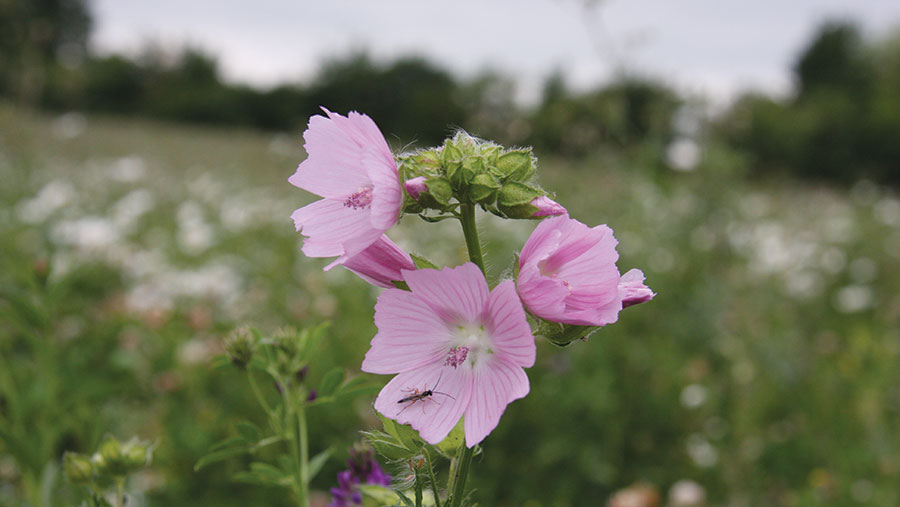FW opinion: Pros and cons to ‘payment by results’ schemes
 Musk mallow flowering in pilot project pollen and nectar plot © Davvid Whiting/Natural England
Musk mallow flowering in pilot project pollen and nectar plot © Davvid Whiting/Natural England The findings of Natural England’s “payment-by-results” (PBR) pilot schemes are out and participating farmers in Yorkshire and East Anglia, as well as industry leaders, are feeling encouraged.
Defra has already funded an extension of the pilot until March 2021, and Natural England chairman Tony Juniper is so impressed, he thinks the scheme could form the basis of the future Environmental Land Management scheme (ELMs) after Brexit.
See also: Payment by results – a blueprint for farm support post Brexit
The early results are impressive. For example, participating farmers recorded a 43% increase in the number and diversity of seed-bearing plants compared with nearby sites under conventional funding schemes.
Farmers will also welcome the greater control they have over options, rather than the prescriptive approach of current agri-environment schemes. But this must be handled in the right way, including training and support to help identify objectives most suited to different areas.
Some farmers may not realise the potential of their land and be underambitious, but others may attempt measures that go beyond their limitations. Access to the right advisers – from Defra, Natural England or partner agencies – will therefore be key.
There is also great value in peer-to-peer learning. Farmers learn best from each other, and so-called “cluster groups” could deliver multiple benefits, including opportunities to share knowledge and promote best practice.
Undoubtedly, the biggest change will be the shift to being paid according to environmental outcomes, and that comes with added risk.
Current agri-environment schemes pay farmers by activity, so there is no real risk of losing money if environmental outcomes aren’t achieved.
However, with PBR there could be all sorts of extraneous matters that complicate payment rates, such as weather extremes, underlying variation in site conditions or poor management choices.
And even the best-laid plans to encourage wildlife can be frustrated by things beyond a farmer’s control, like drought or marauding crows.
Many questions remain unanswered, such as the amount of paperwork, number of inspections and who decides if the results have been satisfactorily achieved?
The right incentives must also be in place for farmers to take additional risks and entice them to shift away from producing crops. Payment rates will need to reflect these risks and if farmers achieve their targets, they should be paid handsomely.
Income foregone is little incentive, if you have no income to start with.
Time for retailers to relax their grip on dairies
This week’s announcement that Tomlinson’s Dairies in Wrexham has gone into administration, leaving about 70 farmers owed for six weeks’ milk, is another blow to the sector, writes business editor Suzie Horne.
There have been many warnings about the state of the UK’s liquid milk market over the past year, driven by the challenging economic background and fierce competition between retailers.
This continual ratcheting down of prices and margins for both milk producer and processor has to stop.
Much more of this approach and retailers will not be able to showcase their farmer suppliers, and how well they treat them, in those huge pictures displayed in store, because those producers will have been driven out of business.
Yes, there are profitable milk producers who are expanding, but the current state of things suggests Tomlinson’s will not be the only casualty, and the knock-on effect is huge.
Farmers need to watch like hawks for early signs of problems among their buyers. By the time the annual accounts are overdue, it may be too late.
